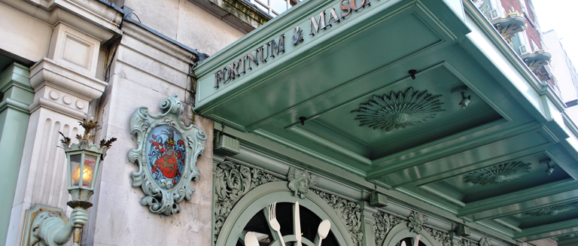Fortnum & Mason Profits from Innovation | World Tea News

Venerable
Fortnum
& Mason, one of the world’s oldest tea brands,
retains its retail vibrancy. Sales of the UK-brand are up 12% to £138
million ($178 million), and profits rose 26% to £12.1
million ($15.9 million) for 12 months ending in mid-July.
Coming
in the wake of the uncertainty surrounding Brexit and slowing sales in Hong
Kong—the location of Fortnum’s only store outside the UK—this news is both
encouraging and offers useful insight.

The
brand credits innovation as a significant reason for the boost in sales. Last
year the company introduced a £16.95 ($22.35) Sparkling Tea for a world that
appreciates elegance in food and drink. The company
announced at launch
that its “sparkling tea, a celebration-ready, organic blend of eight
famous and rare brews, builds on Fortnum’s expertise in tea and responds to
growing consumer appetites for sophisticated, non-alcoholic beverages.”
The
brewed teas are blended with grape juice and lemon juice to
make a refreshingly unique, non-alcoholic alternative that is only comparable
to Champagne or sparkling wine.
Tea and
alcohol have made the rounds – Fortnum
& Mason themselves have a range that includes the Bloody Mary Tea and Gin
and Tonic Tea – but this
innovation is more exciting. The tea demanded the expertise of both wine and
tea experts of the company. It is conceptualized by the award-winning Danish
sommelier Jacob Kocemba who combined Chinese green, gunpowder green, jasmine green,
Darjeeling, Japanese matcha, Nepalese jun chiya, Ceylon greenfield and Chinese silver
needles, for a first.
The tea is described as “off-dry and medium-bodied
featuring primary notes of tropical fruits, while the lemongrass and Darjeeling
palate finishes with waves of tea and water mint.” Designed to pair with
food, it works through a range from fresh seafood to sweet after-dinner treats,
according to the company.
The
high street retail brand was founded in 1707 by builder William Fortnum, who
took a post as a royal footman in Queen Anne’s household (where he was
permitted to sell the royal’s half-used candlewax at a profit). He found a
business partner in landlord Hugh Mason, a shopkeeper turned grocer in a story
worthy of an old classic. In the Victorian era, Fortnum & Mason were the
royal caterers for special occasions at the Court. It is reported that Queen
Victoria sent the brand’s beef tea to Florence Nightingale’s hospitals during
the Crimean war. There are many firsts to its credit. It is the birthplace of
the Scotch egg (1738); the first to stock tinned baked beans made by HJ Heinz
(1886) and creators of the Royal Blend of tea made from Assam and Sri Lankan
black teas (1902). The company was bought over by the Weston group in 1951 and
now has four stores in the UK and one in Hong Kong.
In
recent years, the retailer reported climbing tea sales, with a rise in upmarket
tea-drinking; what has undoubtedly helped it grow is its emphasis and
commitment to innovation, with food and now with tea. Fortnum & Mason’s
Sparkling Tea is also an indicator of the trends in how tastes are changing
among customers by clearly acknowledging the market for holiday shoppers who
are seeking non-alcoholic gifts and beverages.
